On the morning of August 29, 2017 – in Vietnam Japan University (VJU) under Vietnam National University, Hanoi, Prof. Dr. Ueno Kunikazu hosted a talk on “Promoting cultural heritage values in local development” under a series of thematic seminars of the Master’s Program in Area Studies.
In his opening remarks, VJU Vice Rector introduced Prof. Dr. Ueno Kunikazu, the objectives and contents of the seminar. This is one in the series of seminars organized by VJU to provide practical knowledge, solutions to current social problems, and opportunities for students and interested people to meet and talk with professors and experts.

Photo: Vice Rector Dr. Nguyen Hoang Oanh introduced Prof. Dr. Ueno Kunikazu and the contents of the seminar
Prof. Dr. Ueno Kunikazu has been working for many years as a researcher in the field of cultural heritage, especially ancient architecture. He was among the core team of Japanese experts involved in investigating and excavating the relics of Thang Long Imperial Citadel. Dr. Ueno started the lecture with a series of documentary images on Vietnam’s cultural heritage such as Yen Tu relics complex, Long Bien bridge, Phat Diem church, Dong Ho traditional paintings, sculpture, incense making trades etc. Specifically, Prof. Dr. Ueno Kunikazu mentioned the ruins of the ancient pagoda being excavated and researched in Yen Tu, Quang Ninh and Da Chong areas, which may contain a religion of the ancient Vietnamese before other exotic religions appeared. “Had these not been unearthed, we would have never known the meaning of the heritages, and thus cannot find a way to preserve the cultural heritages,” said Prof. Dr. Ueno Kunikazu.

Photo: Prof. Prof. Dr. Ueno Kunikazu delivering the lecture

Photo: Prof. Dr. Ueno Kunikazu introduced terraced fields – one of the featured cultural landscapes.
For local development, cultural heritage is a highlight for expanding the tourism sector, thus promoting the local economy. However, Prof. Dr. Ueno Kunikazu also noted cultural heritages should not be treated as merely tourist attractions; rather, they should be preserved for passing on to the future generations. Many activities employed by the Japanese to both attract tourists and protect the integrity of the cultural heritages can make a great reference: eco-tourism, homestay tourism, or business tourism which combines tourism with exploring the activities and livelihood of local people around the relics, etc.
Many cultural heritages in Vietnam are at risk of disappearing or deteriorating due to massive urban planning to the detriment of cultural heritage preservation. Newly built dwellings mean the loss of old villages, and the history of the land is gradually falling into oblivion.
This is exacerbated by low consciousness of Vietnamese local people in preserving the cultural heritages with very few movements on the preservation of cultural heritage.
Japan also faced the loss of intangible cultural heritages during the modernization era, but has found a way not only to preserve but to uphold their cultural heritages. In recent years, Japan has launched “Machizukuri” concept (Translation: urban construction and development). During Machizukuri process, the preservation of cultural heritage plays an important role. The discovery and valuation of the cultural heritage will help people appreciate the region and the environment in which they are living, thereby forming a sense of identity. With the fulcrum of cultural heritage, people will feel a pride and strong will to transform their locality into a better place. Some activities under “Machizukuri” include: old town maps drawn by people and elementary school children; the students’ search of their remnants after the disasters; etc. organized by local people to deepen the love of young generations for local cultural heritage.
It was this activity that helped the Japanese to retrieve traditional festivals and rituals that seemed to have lost, attract young people and visitors, and bond the community together.
Prof. Dr. Ueno Kunikazu said “Machizukuri” in Japanese has many different layers of meanings. The term is not simply about the construction of roads, houses, parks or public buildings, but rather about non-physical elements of the urban areas. In my personal opinion, this term usually refers to all activities aimed at creating a safe, secure and livable environment. This includes the formation of a community. In many cases, educating and awareness raising activities are conducted for the local people, through which people can gradually engage in “Machizukuri” to create the scenery in their neighborhood.
.png)
Photo: “Machizukuri” activity of drawing neighborhood maps by primary school children, local people and professionals
Besides these activities, the Japanese government also implemented many policies to join the people in preserving cultural heritage including: tax relief, conservation support, and tourism policies applicable to households to ensure that the benefits from cultural heritages can be shared equally among all the local people living around the relics.
The power of the people is the most important factor in preserving the cultural heritage. Good people are more important than good policy. Prof. Prof. Dr. Ueno Kunikazu asserted that Machizukuri may not be copied and replicated in Vietnam, but such activities as learning, education, and guidance by historians for the people in Vietnam are necessary in the mean while.
“People do not live only by bread,” they also think about the past and have pride. Just like humans, each locality needs its own history and identity. Vietnam has a peaceful, stable society and a growing economy – these are favorable conditions for the preservation of cultural heritages. At the end of the lecture, Prof. Dr. Ueno Kunikazu conveyed his hope to present and future Vietnamese citizens who will seek to preserve the precious cultural heritages that we now possess.

